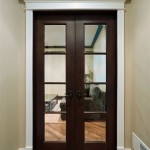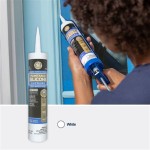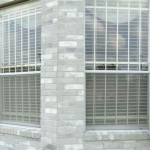Interior Painting Services in Your Area: A Comprehensive Guide
The appearance of a home or business significantly impacts its overall value and the well-being of its occupants. Interior painting represents a straightforward yet effective method for revitalizing living spaces, enhancing their aesthetic appeal, and potentially increasing the property's market value. This article provides a comprehensive overview of interior painting services available in your local area, outlining essential considerations, processes involved, and factors influencing the overall cost.
Selecting the right painting contractor is a crucial step in ensuring a satisfactory outcome. A professional painter possesses the necessary expertise, experience, and equipment to execute the project efficiently and effectively. This translates to a higher quality finish, minimized disruptions to daily life, and assurance that the work complies with relevant safety standards and building codes. Before embarking on any painting project, thorough research and careful planning are essential to achieve the desired results.
Key Point 1: Understanding the Scope of Interior Painting Services
Interior painting encompasses a broad range of services that extend beyond the simple application of paint to walls. A comprehensive understanding of these services allows property owners to identify the specific needs of their project and effectively communicate requirements to potential contractors. Common interior painting services include:
Surface Preparation: This is arguably the most critical aspect of any painting project. Proper surface preparation ensures optimal adhesion of the paint and contributes significantly to the longevity and overall appearance of the finished surface. Surface preparation may involve tasks such as cleaning, sanding, filling holes and cracks, and applying primer. Cleaning removes dirt, grease, and other contaminants that can interfere with paint adhesion. Sanding smooths rough surfaces and creates a textured surface that allows the paint to grip properly. Filling holes and cracks repairs imperfections and creates a uniform surface. Primer seals the surface, prevents the paint from being absorbed unevenly, and improves its adhesion. The specific surface preparation techniques required will depend on the condition of the existing surfaces.
Paint Application: This involves the actual application of paint to the surfaces. Professional painters utilize various techniques, including brushing, rolling, and spraying, depending on the surface and the desired finish. Brushing is typically used for detailed work and areas that are difficult to reach. Rolling is efficient for covering large areas quickly. Spraying provides a smooth, even finish, particularly suitable for textured surfaces. The number of coats of paint required will depend on the type of paint used, the color being applied, and the existing color of the surface. Typically, two coats are sufficient to achieve full coverage and a uniform color.
Trim Painting: This includes painting baseboards, door frames, window frames, and crown molding. Trim painting requires precision and attention to detail to achieve a clean, crisp finish. Painters often use specialized brushes and techniques to ensure sharp lines and avoid paint bleeding onto adjacent surfaces. The choice of paint for trim is often different from the paint used on walls, typically a more durable, semi-gloss or gloss finish to withstand wear and tear.
Ceiling Painting: Ceilings are often overlooked but can significantly impact the overall appearance of a room. Ceiling painting can brighten a room, hide imperfections, and create a more spacious feel. Special paints are often used for ceilings, such as flat or matte finishes, to minimize glare and hide imperfections. Professional painters have the necessary equipment and experience to safely and efficiently paint ceilings.
Wallpaper Removal: In many cases, interior painting projects may involve removing existing wallpaper. Wallpaper removal can be a time-consuming and labor-intensive process, often requiring specialized tools and techniques. Professional painters can safely and effectively remove wallpaper without damaging the underlying walls.
Specialty Finishes: Beyond standard paint finishes, some homeowners may desire specialty finishes, such as faux finishes, textured finishes, or decorative painting techniques. These finishes can add unique character and visual interest to a room. Professional painters specializing in specialty finishes can create custom looks tailored to the individual homeowner's preferences.
Key Point 2: Factors Influencing the Cost of Interior Painting
The cost of interior painting services can vary significantly depending on several factors. Understanding these factors allows property owners to develop a realistic budget and make informed decisions when selecting a painting contractor.
Size of the Area: The square footage of the area to be painted is a primary determinant of the cost. Larger areas require more paint, labor, and time to complete. Contractors typically provide estimates based on the square footage of the walls and ceilings to be painted.
Complexity of the Project: The complexity of the project, including the number of rooms, the height of the ceilings, and the presence of intricate architectural details, can affect the cost. Rooms with numerous corners, windows, and doors require more time and effort to paint. High ceilings may require specialized equipment, such as scaffolding or ladders, which can increase the labor cost.
Surface Preparation Required: The extent of surface preparation required can significantly impact the cost. Walls requiring extensive cleaning, sanding, patching, or priming will necessitate more labor and materials. Walls with existing damage, such as cracks or water stains, may require more extensive repairs before painting, further increasing the cost.
Type of Paint Used: The type of paint used can also affect the cost. Higher-quality paints typically cost more but offer better coverage, durability, and longevity. Specialized paints, such as mildew-resistant paints for bathrooms or low-VOC paints for environmentally sensitive individuals, may also cost more. The finish of the paint, such as matte, eggshell, satin, semi-gloss, or gloss, can also affect the price, with higher gloss finishes generally costing more.
Labor Costs: Labor costs can vary depending on the contractor's experience, expertise, and location. Licensed and insured contractors typically charge more than unlicensed contractors but offer greater peace of mind and protection against liability. The complexity of the project and the time required to complete it will also influence the labor cost.
Additional Services: Additional services, such as wallpaper removal, trim painting, or specialty finishes, will add to the overall cost. Wallpaper removal can be a time-consuming and labor-intensive process. Trim painting requires precision and attention to detail. Specialty finishes require specialized skills and materials.
Geographic Location: Painting costs can vary based on geographic location. Markets with a higher cost of living will typically have higher labor and material costs. The availability of qualified contractors in a particular area can also influence pricing.
Key Point 3: Selecting the Right Interior Painting Contractor
Choosing the right interior painting contractor is a critical aspect of ensuring a positive and successful painting experience. Several factors should be considered when selecting a contractor.
Licensing and Insurance: Verify that the contractor is properly licensed and insured. Licensing ensures that the contractor meets certain standards of competence and adheres to local regulations. Insurance protects the property owner from liability in the event of accidents or damages during the painting process. Request proof of licensing and insurance before hiring a contractor.
Experience and Expertise: Consider the contractor's experience and expertise in interior painting. A contractor with a proven track record of successful projects is more likely to deliver high-quality results. Ask for references from previous clients and review online reviews to assess the contractor's reputation and performance.
Portfolio and References: Request to see the contractor's portfolio of completed projects. This will provide insight into the contractor's aesthetic style, attention to detail, and overall quality of work. Contact previous clients to inquire about their experience with the contractor, including the quality of the work, the professionalism of the crew, and the overall satisfaction with the project.
Detailed Estimates: Obtain detailed written estimates from multiple contractors. The estimate should clearly outline the scope of work, the materials to be used, the labor costs, and the payment schedule. Compare the estimates carefully to ensure that they are comparable and that all essential aspects of the project are included. Be wary of estimates that are significantly lower than other estimates, as this may indicate hidden costs or substandard work.
Communication and Professionalism: Evaluate the contractor's communication skills and professionalism. A reliable contractor should be responsive, communicative, and transparent throughout the entire process. They should be willing to answer questions, address concerns, and provide regular updates on the progress of the project. A professional contractor will treat the property with respect and maintain a clean and organized work environment.
Contract Agreement: Ensure that a written contract agreement is in place before commencing any work. The contract should clearly define the scope of work, the materials to be used, the payment schedule, the project timeline, and any warranties or guarantees. Carefully review the contract before signing it to ensure that all terms and conditions are clearly understood.
Warranty and Guarantee: Inquire about the contractor's warranty and guarantee policies. A reputable contractor will stand behind their work and offer a warranty against defects in workmanship or materials. The warranty should specify the duration of coverage and the remedies available in the event of a problem.
By carefully considering these factors and conducting thorough research, homeowners can confidently select an interior painting contractor who will deliver high-quality results and a positive painting experience. A well-executed interior painting project can transform the appearance of a home, enhance its value, and create a more comfortable and enjoyable living environment.
Ultimately, the selection of an interior painting contractor necessitates due diligence and a comprehensive assessment of qualifications, experience, and customer feedback. Utilizing the information outlined in this article will empower property owners to make informed decisions and ensure a successful outcome for their interior painting projects.

Interior House Painting Services Turner Company

Luminosity Painting Company

A Completed Interior Painting Job By Paint It Okc

Handyman Shrewsbury Interior Painting

Can I Live In My House During Interior Painting Williams

How Often Should I Repaint The Interior Of My Home

Painters Near My Location

Kitchen Cabinet Painters Tulsa Painting The Interior Exterior House

Painting Interior Scenes In Watercolor Inspiration From Bonnard Belinda Del Pesco

Cost Of Painting A House Interior Comprehensive Guide
Related Posts








